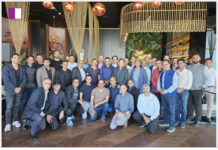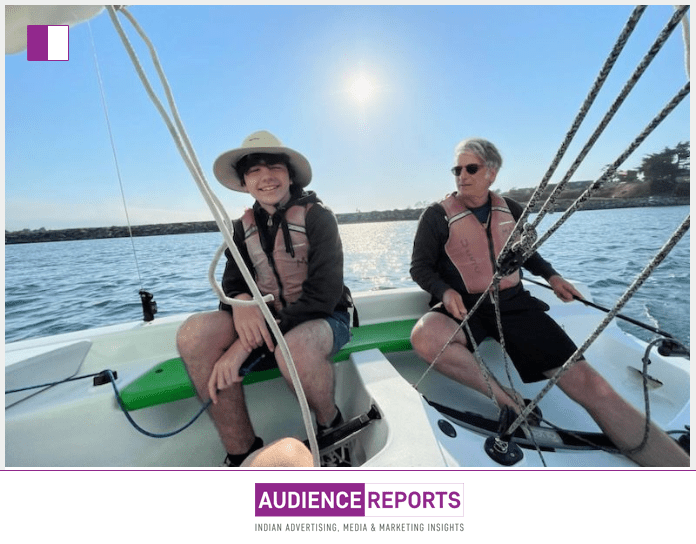Michael Cartsonis, Founder and Cybersecurity & AppSec Expert, draws a fascinating analogy between learning to sail in the shark-infested waters of Santa Cruz and navigating the increasingly dangerous landscape of cybersecurity. Just as unpredictable winds and treacherous waters can test a sailor’s skills and expose vulnerabilities in the boat, modern cybersecurity threats are evolving at breakneck speed, leaving organizations scrambling to defend themselves from attacks that are as sudden and sophisticated as an unexpected storm.
Michael Cartsonis emphasizes that in cybersecurity, much like in sailing, success depends on anticipating and adapting to changing conditions. As he learned the intricacies of sailing small, tippy boats, Cartsonis observed that even minor vulnerabilities could lead to disastrous consequences. In the world of cybersecurity, the same is true. Weak spots in an organization’s defenses, if left unchecked, can be quickly exploited by bad actors with devastating results.
Michael Cartsonis has spent his career helping organizations protect themselves from these ever-evolving threats, but his recent experiences have highlighted an essential truth: traditional cybersecurity approaches, characterized by siloed teams and fragmented strategies, are no longer enough. In a rapidly changing environment, where AI-driven malware and personalized phishing attacks are becoming the norm, organizations need to adopt a new paradigm that fosters cross-functional collaboration and leverages the collective expertise of their entire teams.
Michael Cartsonis likens a ship’s vulnerability to that of an organization’s cybersecurity posture. “A ship is only as strong as its weakest plank,” he writes. Similarly, cybersecurity defenses are only as effective as their weakest component. When cyber threats increase in force and sophistication, these weaknesses are exposed and can be swiftly exploited. To prevent these potentially catastrophic outcomes, Cartsonis advocates for a collaborative approach that unites various departments within an organization.
Cybersecurity is no longer just the responsibility of the IT department, according to Michael Cartsonis. Instead, it requires the involvement of multiple teams, including security, legal, human resources, marketing, and even external vendors. By bringing together individuals from different areas of expertise, organizations can develop a holistic view of their cybersecurity challenges and devise more comprehensive solutions.
This cross-functional collaboration is critical, as it allows different departments to contribute their unique perspectives and skills to the problem. For example, Michael Cartsonis envisions a scenario where the security team works hand-in-hand with marketing to create awareness campaigns that educate employees about emerging threats. At the same time, the legal team could collaborate with IT to ensure that the organization’s cybersecurity policies are in compliance with relevant regulations. Even vendors can play a vital role by working closely with customers to fine-tune cybersecurity solutions to meet their specific needs.
By fostering collaboration across departments, Michael Cartsonis believes organizations can unlock the power of collective intelligence. This approach not only strengthens cybersecurity defenses but also leads to faster incident response times and greater overall resilience. When everyone in an organization feels invested in the protection of valuable assets, the result is a more secure and sustainable cybersecurity strategy.
Michael Cartsonis also emphasizes that the benefits of cross-functional collaboration extend beyond enhanced cybersecurity. Breaking down silos and encouraging open communication across departments can help foster a culture of shared responsibility, where everyone understands their role in safeguarding the organization. This sense of teamwork strengthens not only cybersecurity defenses but also the overall organizational culture, promoting resilience and unity in the face of external threats.
In his post, Michael Cartsonis highlights the urgent need for organizations to adapt their cybersecurity strategies to keep pace with the growing sophistication of cybercriminals. He notes that bad actors are increasingly collaborating with one another, sharing technologies and techniques to exploit new vulnerabilities more effectively. To defend against these coordinated efforts, Cartsonis argues, organizations must adopt a similar approach by fostering collaboration among their own teams.
“We are quickly entering a new world where bad actors collaborate and effectively exploit new technologies together,” Michael Cartsonis writes. “To defend, so do we.” This call to action is a reminder that cybersecurity can no longer be treated as an isolated function within an organization. Instead, it must be integrated into every aspect of the business, with each department contributing to the overall defense.
Michael Cartsonis’s sailing analogy is a powerful reminder that cybersecurity is not a static challenge—it is dynamic, unpredictable, and constantly evolving. Just as a sailor must be prepared to adjust their course in response to changing winds, organizations must be agile and proactive in their approach to cybersecurity. The days of relying on isolated teams and fragmented strategies are over. In today’s landscape, success requires collaboration, creativity, and the willingness to leverage the collective strength of the entire organization.
As a cybersecurity and AppSec expert, Michael Cartsonis understands the importance of staying ahead of emerging threats. His approach, grounded in cross-functional collaboration and collective intelligence, offers a roadmap for organizations looking to bolster their cybersecurity defenses and navigate the increasingly complex digital waters. By embracing this new paradigm, organizations can not only protect themselves from immediate threats but also build a more resilient foundation for long-term success.
Michael Cartsonis’s vision for cybersecurity is clear: collaboration is key. Just as he learned to sail through challenging waters, organizations must navigate the ever-evolving threat landscape by leveraging the strengths of their entire teams. Through cross-functional collaboration, they can build more robust defenses, respond more quickly to incidents, and ultimately create a culture of shared responsibility that paves the way for long-term success.





































